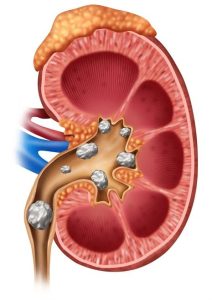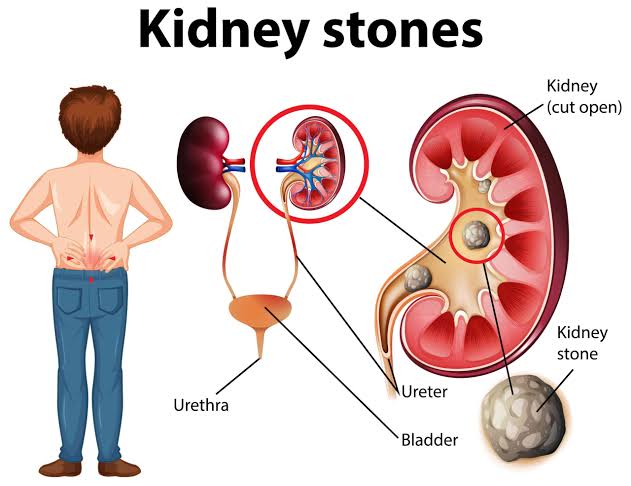As I lay in the hospital bed, my body wracked with pain, I couldn’t help but feel like my world was crashing down around me. The diagnosis had come like a thunderbolt – kidney stones, those tiny “Pebbles of Perseverance” that seemed to be wreaking havoc on my life. But as I gazed up at the IV drip, steadily pumping life-saving fluids into my veins, I knew I had a choice to make. I could let these pebbles crush me, or I could use them as a catalyst for transformation.
With a newfound determination, I began to fight back against the pain and the fear. I started to see these kidney stones for what they truly were – a testament to my body’s strength and resilience. And as I slowly began to heal, I realized that my journey was not just about overcoming this physical challenge, but about confronting the self-doubt that had been holding me back for so long. I was determined to rise up, to silence my inner critic, and to emerge stronger and more vibrant than ever before.
As I sat up, my eyes locked on the water glass beside me, I felt a surge of hope and determination course through my veins. I knew that every sip, every breath, every beat of my heart was a victory. And as I gazed out at the world beyond my hospital window, I knew that I was ready to take on whatever lay ahead. For I had faced my fears, and I had emerged triumphant. I had transformed those “Pebbles of Perseverance” into a symbol of my own strength, and I was ready to share that strength with the world.
What is Kidney Stone?

Kidney stones: Small, hard mineral deposits that form inside the kidneys, causing pain, nausea, and vomiting, and can block urine flow, leading to infection, kidney damage, or failure.
Types
1. Calcium stones (most common):
– Made of calcium oxalate or calcium phosphate
– Often caused by excess calcium in the urine, dietary factors, or genetic predisposition
2. Uric acid stones:
– Formed from uric acid, a waste product in the blood
– Common in people with gout, certain cancers, or those who consume a high-purine diet
3. Cystine stones (rare):
– Composed of cystine, an amino acid
– Caused by a genetic disorder that affects the transport of cystine in the kidneys
4. Struvite stones:
– Made of magnesium, ammonium, and phosphate
– Often associated with urinary tract infections (UTIs) or other infections.
Causes
1. Dehydration
2. Diet high in animal protein
3. Excessive sodium intake
4. High sugar consumption
5. Insufficient water intake
6. Family history
7. Medical conditions (e.g., kidney disease, gout)
8. Sedentary lifestyle
9. Obesity
10. Certain medications
11. Imbalanced diet
12. High intake of oxalate-rich foods
13. Excessive vitamin D supplementation
14. Certain medical conditions (e.g., high blood pressure, inflammatory bowel disease)
15. Low intake of citrus fruits and vegetables
16. High intake of purine-rich foods (e.g., meat, seafood)
17. Genetic disorders (e.g., cystinuria)
18. Infections (e.g., UTIs)
19. Certain supplements (e.g., calcium, vitamin C)
20. Other medical conditions (e.g., kidney damage, certain cancers)
Symptoms
1. Severe pain in the side or back
2. Pain that radiates to the lower abdomen or groin
3. Nausea and vomiting
4. Frequent or intense urination
5. Painful urination
6. Blood in the urine
7. Cloudy or strong-smelling urine
8. Fever and chills
9. Abdominal swelling
10. Burning sensation while urinating
11. Urgent need to urinate
12. Inability to urinate
13. Painful bowel movements
14. Abdominal cramps
15. Weakness or fatigue
16. Loss of appetite
17. Dizziness or lightheadedness
18. Flank pain (pain in the area between the ribs and hips)
19. Testicular pain (in men)
20. Vaginal pain (in women)
Complications
1. Recurrent stones: Increased risk of developing future stones.
2. Kidney damage: Scarring, inflammation, or permanent damage to kidney tissue.
3. Chronic pain: Persistent pain in the back, side, or abdomen.
4. Urinary tract infections:(UTIs): Bacteria can accumulate in the stone, leading to infections.
5. Kidney failure: Blockage of the ureter can cause waste buildup, leading to kidney failure.
6. Sepsis: Infection can spread to the bloodstream, causing life-threatening sepsis.
7. Kidney abscess: Pocket of pus in the kidney, requiring surgical drainage.
8. Ureteral stricture: Narrowing of the ureter, making it harder for stones to pass.
9. Kidney atrophy: Shrinkage of the kidney due to chronic obstruction.
10. Systemic complications: Stones can increase the risk of cardiovascular disease, hypertension, and diabetes.
11. Obstruction of the ureteropelvic junction: Blockage of the junction between the ureter and renal pelvis.
12. Hydronephrosis: Swelling of the kidney due to urine accumulation.
13. Nephron damage: Damage to the functional units of the kidney, leading to chronic kidney disease.
14. Kidney cancer: Although rare, kidney stones may increase the risk of developing kidney cancer.
15. Other systemic complications: Kidney stones may also increase the risk of other systemic complications, such osteoporosis and gout.
Prevention
1. Drink plenty of water: Adequate hydration helps dilute urine and reduce stone risk.
2. Maintain a balanced diet: Eat a diet low in animal protein, sodium, and sugar.
3. Limit oxalate-rich foods: If you have a history of oxalate stones, limit foods like spinach, beets, and rhubarb.
4. Increase citrus intake: Citrus fruits like lemons and oranges contain citrate, which can help prevent stones.
5. Reduce sodium intake: Consume less than 2,300 milligrams of sodium per day.
6. Limit caffeine and alcohol: Excessive consumption can increase stone risk.
7. Maintain a healthy weight: Obesity increases the risk of developing kidney stones.
8. Exercise regularly: Regular physical activity can help improve circulation and reduce stone risk.
9. Manage underlying medical conditions: Conditions like high blood pressure, diabetes, and gout can increase stone risk.
10. Consider medication: Certain medications like potassium citrate or thiazide diuretics may be prescribed to help prevent stones.
11. Get enough calcium: Adequate calcium intake can help reduce oxalate absorption.
12. Avoid excessive vitamin D supplementation: High levels of vitamin D can increase stone risk.
13. Limit animal protein: Excessive animal protein consumption can increase stone risk.
14. Get enough magnesium: Magnesium can help reduce stone risk.
15. Consider a kidney stone prevention diet: Your doctor or a registered dietitian can help you develop a personalized diet plan.
Treatment
Medical Therapy:
1. Pain management with medications like ibuprofen or acetaminophen
2. Alpha-blockers to help stones pass
3. Antibiotics for UTIs
4. Medications to increase urine pH (e.g., potassium citrate)
Lifestyle Changes:
1. Increased fluid intake (at least 8-10 glasses/day)
2. Dietary modifications (e.g., reduced sodium, animal protein, and oxalate)
3. Regular exercise
4. Stress management
Surgical Interventions:
1. Extracorporeal shock wave lithotripsy (ESWL) to break stones into smaller fragments
2. Ureteroscopy (URS) to remove stones via a scope through the urethra
3. Percutaneous nephrolithotomy (PCNL) to remove larger stones through a small incision
4. Open nephrolithotomy (open surgery) in rare cases
Other treatments:
1. Medical expulsive therapy (MET) to help stones pass
2. Lithotripsy to break stones into smaller fragments
3. Kidney stone removal procedures (e.g., basket retrieval)

